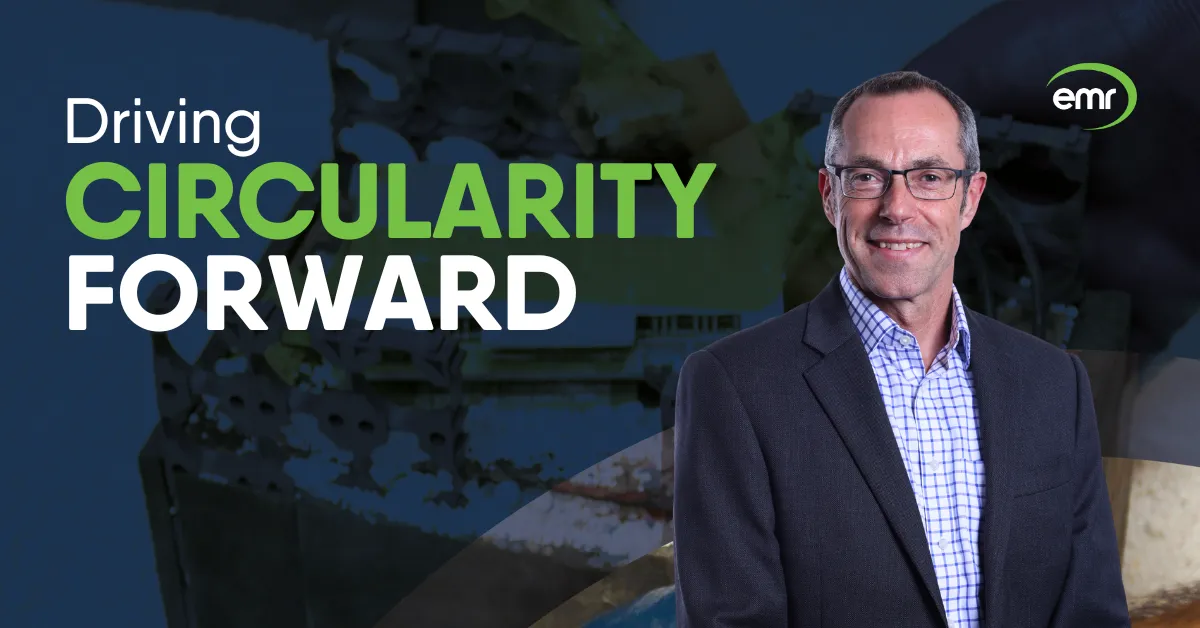CHOOSE
A DIFFERENT TERRITORY

Listen to this story
With their large quantities of high-quality metals and plastics, it’s little surprise that boosting the reuse and recycling rates of end-of-life vehicles (ELVs) has become a priority for car makers (OEMs) and policymakers alike.
And, as demand for greater circularity and sustainability has grown, a culture of investment and innovation has enabled EMR – one of Europe’s largest ELV recyclers – to offer practical and effective solutions to the whole value supply chain.
With the European Council and European Parliament setting out their proposed updates to the ELV Directive in June, this approach is particularly timely. The Council’s agreed measures include:
Following input from its Environment and Internal Market Committees, the European Parliament adopted further measures:
While a small number of other differences exist between the Council and Parliament’s positions, the direction of travel is clear.
Although the emergence of high-performance electric vehicles (EVs) highlights the industry’s long-term commitment to the green transition, these changes will create challenges for OEMs and their partners. So how can EMR help?
Firstly, EMR has been busy developing a range of processes and technologies that will boost the recycling rates of end-of-life vehicles. As the recyclability of a vehicle is defined by its design, EMR has been holding ‘circularity labs’ for design teams and engineers at some of Europe’s biggest OEMs. Simple changes - for example, to the amount of glue used to hold a component in place - can make a dramatic difference to how efficiently and effectively a vehicle can be dismantled at end-of-life.
At EMR Hamburg, meanwhile, we’ve developed an intelligent analysis process for assessing used EV batteries’ viability for use in a new vehicle or for energy storage. If neither option is possible, EMR safeguards the valuable materials within by recycling – reducing the demand for the nature-depleting mining of virgin materials and boosting Europe’s resource security.
And, from establishing a recycling service for the plastics in car bumpers with Jaguar Land Rover and Polestar (via EMR’s plastics recycling arm MBA Polymers UK) to its recently-announced collaboration with other partners in CirculaREEconomy – a project which will develop a circular economy for rare-earth magnets – EMR is championing a wide range of solutions to help OEMs achieve compliance with the ELV Directive.
With its strong links across the industry and decades of expertise in the ELV recycling sector, EMR is well placed to identify areas of concern – and to share these with policymakers.
Technical requirements proposed in the legislation – such as limits to the amount of copper permitted in recycled steel and mandating the cast/wrought separation of aluminium – currently fail to reflect modern recycled metal content and may lock recycled materials out of the next generation of processing technologies. EMR and its partners are developing other technical solutions which can achieve the same circularity objective at lower carbon impact and cost.
Meanwhile, proposed rules on shredder residue thresholds, limiting residual metal and organics to <1% and <5%, respectively, may be technically unachievable.
EMR’s leadership in this industry means it can stand alongside bodies such as the European Recycling Industries’ Confederation (EuRIC) and make the case that, if implemented too rigidly, such quality thresholds risk discouraging investment, complicating operations, and not delivering environmental benefits.
None of this should distract from the fact that the path forward for the automotive industry is now clearer than ever. And if companies at any stage of the supply chain want to build circularity into their operations, EMR has a suite of solutions – developed alongside industry partners – to meet the moment.